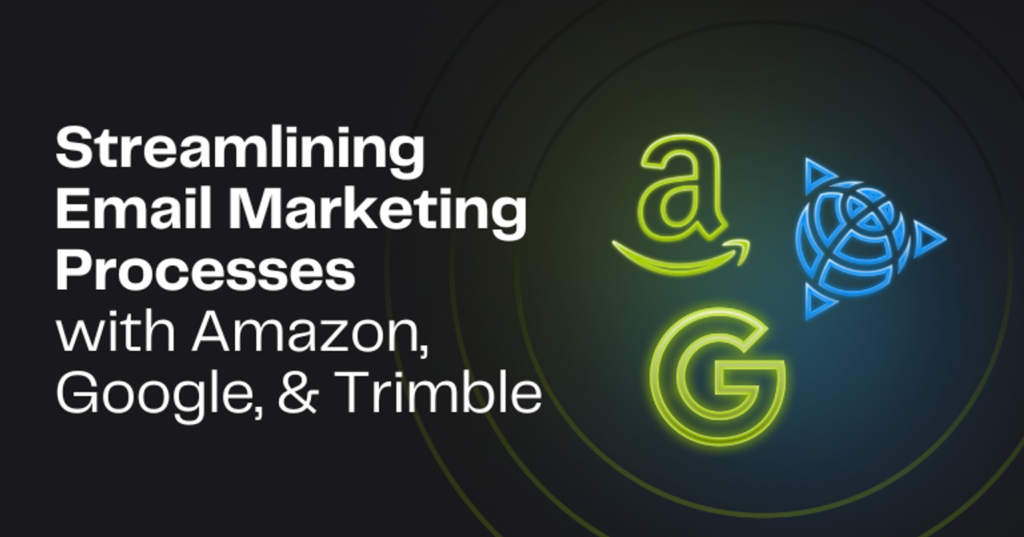Email marketing can seem complex and time-consuming. But it doesn’t have to be that way.
Streamlining your email marketing processes can save you valuable time and resources. By simplifying tasks, you can focus on what truly matters—engaging your audience. Many businesses struggle with managing their email campaigns efficiently. They often find themselves bogged down by repetitive tasks and manual work.
Streamlining these processes can lead to better results and less stress. Imagine having more time to create quality content and build stronger relationships with your subscribers. This blog will guide you through methods to make your email marketing more efficient. Let’s dive into the world of streamlined email marketing.

Credit: fastercapital.com
Table of Contents
Email Marketing Overview
Email marketing is a powerful tool in the digital world. It helps businesses connect with their audience directly. Understanding its importance and challenges can streamline your email marketing processes.
Importance Of Email Marketing
Email marketing offers a direct line to your customers. It allows businesses to send personalized messages. This can increase engagement and build trust. Unlike social media, your email list is owned by you. There’s no risk of losing contact due to platform changes. Email marketing also offers high ROI. With a well-crafted strategy, small investments can lead to big returns.
Current Challenges
Email marketing is not without its challenges. Many businesses struggle with low open rates. Emails often get lost in crowded inboxes. Crafting the perfect subject line is tricky. It must grab attention without being spammy. Segmentation is another challenge. Sending the right content to the right audience is crucial. Without proper segmentation, emails may not resonate with recipients.
Regulations also pose challenges. Laws like GDPR require businesses to handle data carefully. Compliance is necessary but can be complex. Deliverability issues can also arise. Emails may end up in spam folders. Ensuring emails reach the inbox is critical. These challenges need addressing for effective email marketing.
Setting Clear Objectives
Setting clear objectives is crucial for streamlining your email marketing processes. Without clear goals, you may waste time and resources. This section will guide you through defining goals and measuring success for your email marketing campaigns.
Defining Goals
Start by identifying what you want to achieve. Possible goals include increasing open rates, boosting click-through rates, or improving conversion rates. Be specific. For example, aim to increase open rates by 20% within three months.
- Open Rates: The percentage of recipients who open your email.
- Click-Through Rates: The percentage of recipients who click on a link within your email.
- Conversion Rates: The percentage of recipients who complete a desired action, such as making a purchase.
Measuring Success
Once you’ve set your goals, you need to measure your success. Use tools like Google Analytics or your email marketing platform’s built-in analytics. Track key metrics such as open rates, click-through rates, and conversion rates.
| Metric | Definition | Target Value |
|---|---|---|
| Open Rate | Percentage of emails opened | 20% increase |
| Click-Through Rate | Percentage of links clicked | 15% increase |
| Conversion Rate | Percentage of desired actions completed | 10% increase |
Regularly review these metrics to gauge your performance. Adjust your strategies as needed to meet your objectives.
Segmenting Your Audience
Segmenting your audience is a key step in streamlining your email marketing processes. By dividing your audience into smaller groups based on specific criteria, you can send more personalized and relevant emails. This can lead to higher open rates, better engagement, and improved customer loyalty.
Understanding Segmentation
Segmentation involves breaking down your email list into different groups. These groups are based on shared characteristics. The most common types of segmentation include:
- Demographic Segmentation: Age, gender, income, education level.
- Geographic Segmentation: Country, region, city.
- Behavioral Segmentation: Purchase history, website activity, email engagement.
- Psychographic Segmentation: Lifestyle, interests, values.
By understanding these characteristics, you can tailor your messages to better meet the needs of each group.
Effective Segmentation Strategies
To segment your audience effectively, you need to collect the right data. Here are some strategies:
- Use Sign-Up Forms: Include fields that capture relevant information.
- Analyze Purchase Data: Identify patterns in what customers buy and when.
- Track Email Engagement: Monitor who opens your emails and clicks on links.
- Conduct Surveys: Ask your audience about their preferences and interests.
Once you have this data, you can create detailed segments. For example, you might create a segment for customers who have purchased in the last 30 days. Another segment could be for those who have shown interest in a particular product category.
Here is a simple table to illustrate the segmentation process:
| Segment | Criteria | Example Campaign |
|---|---|---|
| New Customers | Signed up in the last month | Welcome series |
| Engaged Users | Opened last 5 emails | Exclusive offers |
| High Spenders | Spent over $500 | VIP program |
Implementing these strategies can help you create highly targeted email campaigns. This can increase your overall email marketing effectiveness.
Personalizing Email Content
Personalizing email content can significantly boost engagement rates. Personalized emails show customers you understand their needs. This approach can also enhance customer loyalty.
Crafting Personalized Messages
Creating personalized messages involves understanding your audience. Start by segmenting your email list. Group your subscribers based on their interests, purchase history, or demographics. This allows you to tailor your content to each segment.
Use the recipient’s name in the subject line and greeting. This simple touch can make a big difference. Also, write in a friendly, conversational tone. Your emails should feel like a one-on-one conversation.
Here are some tips for crafting personalized messages:
- Use the recipient’s name
- Segment your email list
- Write in a friendly tone
- Include relevant content
Utilizing Dynamic Content
Dynamic content changes based on the recipient’s data. This allows you to deliver highly relevant content. For example, you can show different products to different segments.
Here is how you can utilize dynamic content:
- Identify key data points
- Set up dynamic content blocks
- Test and refine your content
Dynamic content can include:
| Type | Example |
|---|---|
| Product Recommendations | Show products based on past purchases |
| Location-Based Offers | Offer discounts based on the recipient’s location |
| Behavioral Triggers | Send emails based on website behavior |
Personalizing email content can lead to higher engagement and better results. Start by crafting personalized messages and utilizing dynamic content. Your subscribers will appreciate the tailored experience.
Automating Email Campaigns
Automating email campaigns can save time and increase efficiency. It allows businesses to send personalized messages without constant manual input. This process helps maintain consistent communication with customers and improves engagement rates. By using automation tools, businesses can focus on other important tasks while ensuring their email marketing remains effective.
Benefits Of Automation
One major benefit of automation is time-saving. Automated emails can be scheduled in advance. This reduces the need for constant monitoring. Automation also ensures that emails are sent at optimal times. This can lead to higher open and click-through rates.
Another benefit is improved personalization. Automated tools can segment audiences based on behavior. This allows for more targeted messaging. Personalization can lead to better customer engagement. It can also increase the chances of conversion.
Consistency is another key advantage. Automated emails ensure regular communication. This helps keep the audience engaged. It also builds trust with the brand.
Tools For Automation
Many tools are available for automating email campaigns. Mailchimp is a popular choice. It offers user-friendly features and extensive automation options. Users can set up automated workflows based on customer actions.
Another option is ActiveCampaign. This tool provides advanced segmentation and personalization options. It also includes CRM features. This makes it suitable for businesses looking for a comprehensive solution.
For those on a budget, Sendinblue is a good option. It offers many automation features at a lower cost. It also includes SMS marketing capabilities.
Choosing the right tool depends on business needs. Consider features, pricing, and ease of use. The right tool can make email marketing more effective and less time-consuming.
Analyzing Campaign Performance
Analyzing Campaign Performance is an essential part of any email marketing strategy. Understanding how your campaigns perform helps you make better decisions. It also ensures that your efforts are not in vain. By focusing on key metrics and interpreting data, you can refine your approach. This helps in creating more effective email campaigns.
Key Metrics To Track
Tracking the right metrics is crucial for understanding campaign performance. Here are some key metrics you should focus on:
- Open Rate: This shows the percentage of recipients who opened your email.
- Click-Through Rate (CTR): This indicates the percentage of recipients who clicked on a link in your email.
- Conversion Rate: This measures the percentage of recipients who completed a desired action.
- Bounce Rate: This shows the percentage of emails that were not delivered.
- Unsubscribe Rate: This indicates the percentage of recipients who opted out of your email list.
Interpreting Data
Interpreting data helps in making informed decisions. Here’s how you can analyze the data:
- Open Rate: A low open rate may indicate poor subject lines. It may also suggest that your emails are being sent at the wrong time.
- Click-Through Rate (CTR): A low CTR suggests that your content is not engaging. It might also mean that your call-to-action is not clear.
- Conversion Rate: A low conversion rate may indicate that your landing page is not effective. It could also mean that your offer is not compelling.
- Bounce Rate: A high bounce rate might mean that your email list is outdated. It could also indicate issues with your email server.
- Unsubscribe Rate: A high unsubscribe rate suggests that your content is not relevant. It might also mean that you are sending emails too frequently.
Using these insights, you can fine-tune your email marketing strategy. This ensures that your campaigns are more effective and engaging.
A/b Testing Strategies
A/B Testing Strategies are essential for optimizing your email marketing campaigns. They help you understand what works best for your audience. By comparing different versions of your emails, you can see which one performs better. This process helps you make informed decisions to improve your email marketing efforts.
Why A/b Testing Matters
A/B testing matters because it provides data-driven insights. These insights help improve your email marketing strategy. Here are some reasons why:
- Helps identify what resonates with your audience
- Improves email open and click-through rates
- Reduces bounce rates
- Increases overall engagement
Without A/B testing, you rely on guesswork. Testing different elements of your emails, such as subject lines and images, provides concrete data. This data helps you create more effective emails.
Implementing A/b Tests
Implementing A/B tests involves several steps. Follow this structured approach for effective testing:
- Define your goal: What do you want to achieve? Higher open rates or more clicks?
- Choose one variable to test: This could be the subject line, email content, or call-to-action.
- Create two versions: Version A (control) and Version B (variation).
- Send your emails: Split your audience into two groups. Send Version A to one group and Version B to the other.
- Analyze the results: Compare the performance of both versions. Identify which one achieved your goal better.
It’s crucial to test one variable at a time. This approach allows you to pinpoint what affects your results. Use your findings to refine your future email campaigns.
| Variable | What to Test | Why it Matters |
|---|---|---|
| Subject Line | Different wording, length | Impacts open rates |
| Email Content | Text vs. images, tone | Affects engagement |
| Call-to-Action | Button color, placement | Influences click-through rates |
Remember to document your results. This documentation helps you track what works and what doesn’t over time. A/B testing is a continuous process. Regular testing and adjustments will lead to better email marketing outcomes.
Improving Deliverability
Effective email marketing depends on your emails reaching the recipient’s inbox. Improving deliverability is crucial. Ensuring a high deliverability rate means more people see and engage with your emails. This leads to better results for your campaigns.
Ensuring Inbox Placement
Getting your emails placed in the inbox rather than the spam folder is key. Here are some steps to help:
- Authenticate your emails: Use SPF, DKIM, and DMARC records.
- Maintain a clean email list: Remove inactive or invalid addresses.
- Use a reputable email service provider (ESP): Choose an ESP with good deliverability rates.
- Monitor sender reputation: Check blacklists and maintain a good IP reputation.
Reducing Bounce Rates
A high bounce rate can harm your sender reputation. Reducing bounces improves deliverability. Consider the following tips:
- Verify email addresses: Use tools to check the validity of email addresses before sending.
- Segment your list: Group recipients based on engagement levels. Send targeted emails to each segment.
- Avoid spammy content: Use clear, concise language and avoid excessive images or links.
- Monitor email performance: Regularly review bounce reports and adjust your strategy as needed.
By focusing on these strategies, you can improve your email deliverability. A higher deliverability rate means more successful email marketing campaigns.
Compliance And Privacy
Managing email marketing involves more than just creating engaging content. Ensuring compliance with regulations and protecting user privacy is crucial. These aspects build trust and prevent legal issues. Let’s explore how to ensure compliance and protect privacy effectively.
Understanding Regulations
Understanding email marketing regulations is essential. They vary by region. For instance, the General Data Protection Regulation (GDPR) in Europe requires clear user consent. The CAN-SPAM Act in the United States mandates including an unsubscribe option.
Here is a simple comparison table:
| Regulation | Region | Key Requirement |
|---|---|---|
| GDPR | Europe | Clear user consent |
| CAN-SPAM Act | United States | Unsubscribe option |
Implementing Best Practices
Implementing best practices ensures compliance and enhances user trust. Here are some tips:
- Always get explicit consent before adding someone to your email list.
- Include a clear and easy way to unsubscribe in every email.
- Regularly clean your email list to remove inactive users.
- Do not share or sell user data without permission.
Following these practices helps maintain a positive reputation. It also shows respect for user privacy, which can lead to better engagement.

Credit: getgenie.ai

Credit: fastercapital.com
Frequently Asked Questions
What Is Email Marketing Automation?
Email marketing automation uses software to send emails based on specific triggers or schedules.
How Can I Improve My Email Open Rates?
Use catchy subject lines, personalize emails, and send at optimal times.
What Are The Benefits Of Segmenting Email Lists?
Segmenting helps you target specific groups, leading to better engagement and higher conversion rates.
Which Tools Are Best For Email Marketing?
Popular tools include Mailchimp, Constant Contact, and Sendinblue. They offer templates and analytics.
How Often Should I Send Marketing Emails?
Send regularly but not too often. Weekly or bi-weekly is usually good.
What Metrics Should I Track In Email Marketing?
Track open rates, click-through rates, conversion rates, and unsubscribe rates for insights.
How Do I Avoid My Emails Going To Spam?
Use verified domains, avoid spammy words, and include an unsubscribe link.
Can Email Marketing Integrate With Social Media?
Yes, you can share email content on social media and grow your list through social platforms.
Conclusion
Streamlining your email marketing processes can save time and boost efficiency. By implementing simple tools and strategies, you can reach your audience more effectively. Consistent scheduling and targeted content help build strong relationships with subscribers. Track your results to see what works best.
Adjust your approach based on feedback and data. Stay organized, and your email campaigns will thrive. Remember, small changes can make a big difference. Start optimizing today for better engagement and growth.







